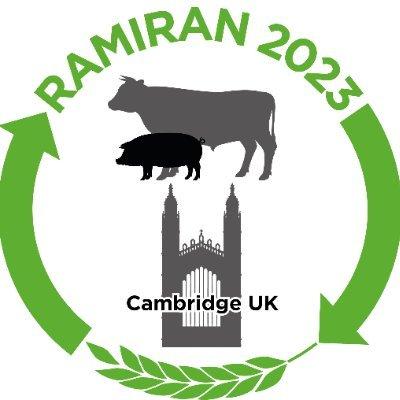
The 18th Recycling of Agricultural, Municipal and Industrial Residues in Agriculture Network (RAMIRAN) conference was a resounding success. See selected resources from the conference below.
Recommended Content
Connected Content
ADAS provides ideas, specialist knowledge and solutions to secure our food and enhance the environment. We understand food production and the challenges and opportunities faced by organisations operating in the natural environment
Soil is an essential natural resource for all farmers. Over recent years many initiatives have sought to provide information and advice on soils and Soil Health, notably AHDB Great Soils.
The livestock industry is an integral part of the agricultural sector, encompassing various aspects of animal husbandry and production. It plays an important role in global food security and supports the livelihoods of millions of people worldwide.
The 18th Recycling of Agricultural, Municipal and Industrial Residues in Agriculture Network (RAMIRAN) conference will be held in Cambridge, UK from 12–14 September 2023. All sessions will be held in the heart of Cambridge at the Guildhalls and Corn Exchange.
This Topic doesn't yet have a Stewarded summary, but connected groups, content and organisations show below. Click the 'Ask to Join' button if you would like to be a Steward for this Topic and provide a summary of current knowledge and recommend useful resources, organisations, networks and projects. "Like" this Topic if you would like to see it prioritised for providing a wikipedia style summary.
Managing nutrients effectively is crucial for our soils, crops, livestock and environment. There are many resources and initiatives available to help.
Organic materials, including livestock manures, biosolids, compost and digestate contain valuable plant nutrients which can save farmers money on their fertiliser bills, and organic matter which can help improve soil quality.
The key GHGs for agriculture that contribute directly to climate change are: Carbon dioxide (CO2) Methane (CH4) Nitrous oxide (N2O) All these GHGs are often grouped under the umbrella term ‘carbon’.




Discussion
Three rather simple questions.
Thanks for your questions Simon
For a slurry application supplying 150 kg/ha total N ammonia emissions from surface broadcast unacidifed pig slurry were on average 45 kg/ha N; acidification reduced the emissions by around 60% so the saving in N would be around 30 kg/ha of N.
We weren't able to assess the effect of acidification on pig growth rates etc because Covid and changes in the pig market meant that the pig management changed significantly at the same time as the acidifcation equipment was introduced at the farm. However the farmer did say that the environment in the house had improved significantly and was more pleasant for people to work in. When discussing with JHAgro a key part of the costs benefit is the improvement in pig production. Its a shame we weren't able to get the data to support this.
During the process the whole slurry is acidified before separation. Analysis of the separated materials suggests that the liquid and solid fractions remain acidified during storage.
The acid used was concentrated sulphuric acid (98%) because it is most available (being a bi product of the petrochemical industry) and requires least volume to reduce pH to target values. Other acids can be used but may have issues relating to availability practicality and cost. There is some interest in using waste products as alternatives as the availability and cost of the acid is key to the process. However further research is needed to identify their effectiveness. Plasma treatment has been shown to be effective at reducing slurry pH sufficiently to reduce ammonia emissions, however the costs and energy requirements may make the technology unsuitable for some farms
Thanks John
My expectation is that the liquid fraction would contain not only more ammonia but it would be easier to treat. I appreciate that you were working with pig slurry but both dairy slurry and digestate are often separated into solid and liquid fractions. It is much easier to mix acid in solution than with a solid where there is going to be interaction with even more components reducing impact.
Silage effluent can have a pH of four, or even lower, and is available to many AD plant operators and most dairy businesses (although I suspect quantity would be inadequate).
Ammonia is clearly toxic. The targeting the two elements (liquid and farm acid source) would be a relatively easy policy introduction and would also make a small financial contribution from more N availability.
Every little bit counts!
Simon
PS Plasma strikes me as expensive!